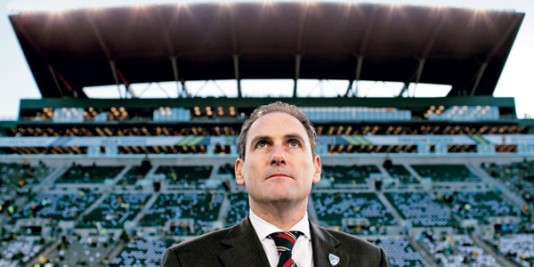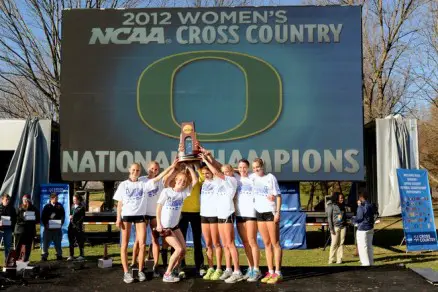Chicken Little is alive and well.
Yesterday’s landmark decision, the latest in a series of landmarks that is sure to change the way we think of college athletics well into the future, set the angst-ridden fans into a free fall of emotion that had them virtually writing their own version of “Death to the BCS” with an updated “”Death of College Football” fears.
While we certainly cannot look into the future and know what is definitively going to happen, I think we have a pretty good idea. Of course, this is opinion and a bit of speculation, but it is based on some concepts that are tried and true and unlikely to change anytime in the near or distant future.
There are several layers to the fear. Many of these layers are being overlapped in a rather elementary fashion when, in fact, they cannot overlap. Today I am going to take a look at just a few concepts and make my own little effort to reassure you.
The sky is not falling; the Zombie Apocalypse is not upon us; college football is not going to be a “highest-bidder-wins” scenario with athletes.
UNION
First let’s look at this event which created the first wave of fear.
In February of 2014, the National Labor Relations Board (NLRB) created a path for Northwestern University athletes to petition for union representation. Essentially the NLRB said that the functions performed by athletes, in combination with the value they provide to the university, created a classification that considered them as employees of the university.
With this ruling, the College Athletes Players Association was able to step in and create some momentum, which led to a vote by the football players to unionize. Because the original decision by the NLRB was a regional decision, the university appealed to the full NLRB. The votes were cast, but the results have been sealed until a resolution is determined on the appeal.
There have been some observers who have commented that, after conducting straw polls of other athletes, they do not believe the union will get enough votes, making the NLRB decision a moot point. Well, I am here to tell you, even if these athletes passed the vote for union representation, the point would still be moot.
Here’s why. Did you know that only private employers are covered by the NLRB? That means that only private universities would have their protection available. Did you know that only 17 NCAA Division I institutions are private? That means that the vast majority (109 of 126, or 86.5%) of Division I institutions cannot unionize under NLRB laws.
Further creating doubt over the value of Northwestern athletes unionizing is the status of the university within the confines of the NCAA. The NCAA has guidelines that state specifically that college athletes must maintain certain criteria in order to be eligible. If the Northwestern athletes unionize and negotiate anything beyond full cost of attendance, better medical coverage and guaranteed scholarships, guess what? The NCAA can step in and tell Northwestern that they are no longer a member.
What would the players do then? Without NCAA membership, their value to the school just became Division III level, meaning that they would no longer have a scholarship to play football. There would not likely be enough private universities that would unionize and consider creating their own small division to compete. They would be starting from scratch. No television deals. No conference affiliations. Nothing.
The vote at Northwestern will do nothing to destroy college football.
POWER 5
This is the most recent driver of the fear train. Five conferences were voted the autonomy to make certain decisions that will affect only their schools. The Southeastern Conference, Pac-12, Atlantic Coast Conference, Big 12 and Big 10 Conferences were given that power last Thursday in a 16-2 vote by the Board of Directors.
The first fear I heard, even repeated on major sports networks, is that this will eventually lead to the five conferences completely seceding from the NCAA and creating their own division. While this is certainly possible, it has always been a possibility. The conferences have never needed a vote of the Board of Directors to do so, they could simply decide to cancel their membership in the group and go off on their own. Any school or group of schools has that right. That did not change with this vote. What this vote allows is the opportunity to be able to make a decision without the likes of Northern Iowa blocking it under the guise of “economic hardship.”
What is an economic hardship for them is not likely to be the same for Oregon, or any other elite football program.
Further, there are limitations. They cannot change playing rules, eligibility rules or create special compliance rules. In essence what this move allows is the ever popular increasing of scholarships to cover “full cost of attendance,” which is likely to include a small yearly stipend in the $2000 range. For the math challenged, that is less than $200 per month of spending money.
The presidents in attendance all concurred that there is no desire to create a pay for play scenario within these conferences.
What it will allow is an opportunity to right some of the wrongs that have made their way into the court systems, most notably better medical coverage during and after completing college eligibility and better rights for athletes, such as scholarships that are guaranteed for longer than a single term. None of this is a bad thing.
There are some specifics as to what this will allow and how it will work. Commissioners and school leaders from the power conferences have until Oct. 1 to create a wish list of areas where they want autonomy.
Any items that make the list would require majority approval from three of the five leagues and still will need the OK of at least 12 of the 20 presidents or chancellors on the expanded board of directors. Then, one representative from each of the 65 schools in the Power-5 and three student-athletes from each conference would vote on each item. Passage would require 48 of the 80 votes and a simple majority of support from schools in at least three of the five conferences or a simple majority of all votes (41) and a simple majority from schools in four of the five leagues, to pass.
NCAA President Mark Emmert also said the board could veto an autonomous rule change if it goes too far. He described that situation as “rare.” So to speculate that it will lead to “bidding wars” for the best players is, quite honestly, a big leap of faith.
TITLE IX IMPLICATIONS
And this is why it is almost silly to think that the universities will start paying football and basketball players exorbitant amounts of money.
Because all NCAA institutions are covered by Title IX which, in college athletics, mandates equal opportunity and equal benefits be given to all female athletes that their male counterparts receive, there are natural economic limitations on every university. If Oregon pays Marcus Mariota $1 million to play football, you will see Title IX lawsuits. And the university would lose.
On the contrary, Title IX is exactly what will keep scholarship amounts in a reasonable range. Women’s groups should be ecstatic about the concept of full cost-of-attendance scholarships because thousands upon thousands of female college athletes are about to get that very same benefit.
END OF COLLEGIATE AFFILIATION
There is also the growing belief that the colleges, to avoid Title IX implications, will simply stop affiliating themselves with universities and create some sort of “minor league” football. Not happening. This one, in my opinion, is simply insane.
Collegiate affiliation is what has made college football grow. Ask yourself this, when is the last time you watched your local minor league baseball team on an ESPN national broadcast? The answer is — never. There would be zero television value to minor league football.
Rivalry. Tradition. Passion. That is what has driven college football from a regional interest to what is possibly the second most popular sport in America, only to the NFL. Without those things, it is just a bunch of kids, most of whom will never make it past that level, playing football not as well as NFL players. There is a reason there is no market for national broadcasts of minor league baseball. Without collegiate affiliation, there would be no market for minor league football.
Think ESPN is going to give up the cash cow of college football and basketball broadcasting rights without a fight? Think again.
SUMMARY
Does this mean there won’t be more changes? No. More changes are sure to come. We know the old saying; change is the only thing you can expect consistently. But I doubt very much that college athletics will move to an NFL-style pay-for-play. There are too many other factors that will stop it from getting there. I expect, at some point, athletes will have some sort of trust fund set, which allows them a benefit after completing eligibility, for the additional value they may have created.
In the mean time, full cost of attendance, better medical care and better scholarship agreements are a good thing. Cherish and embrace how this affects not just these football players, but how it will help so many young women, as well.
Will there become a bigger gap between the haves and the have nots? Yes. No doubt about that. But, you know what, that was going to happen either way. There are just more people willing to contribute to the schools from the Power 5. There is a reason for their level compared to the schools without the same resources.
It’s the law of the jungle. Just be glad Oregon has one of the best “haves” on its side.
Top photo by Scott Reed
Related Articles:
Scott Reed has been a fan of the Ducks from his first days listening to Wendy Ray in 1974 on a scratchy AM radio from Oakridge; forty long years of fandom. He has been a long time contributor to Duck Sports Authority and stumbled into formal writing about the Duck program in 2011 when he looked at the “other side” of the Will Lyles investigation. Long known as “Ducks39” on message boards, he branched deeper into writing for Duck Sports Authority covering games and recruiting for the last four seasons.
Scott works for Roush Industries in Portland as the Operations Supervisor. He received a Bachelor of Science in Management from the University of Oregon in 1994 with honors. Scott is also a long time power lifter who spent time as an Assistant Strength Coach at the University of South Dakota.
He and his wife live in Beaverton. Scott has two grown sons and two step-sons. In what spare time he has left, he likes to read philosophy and lift weights.





